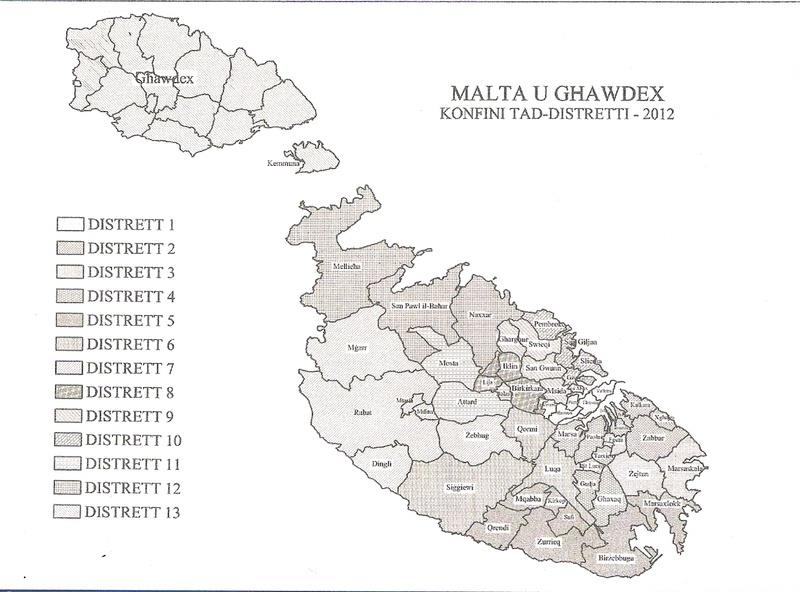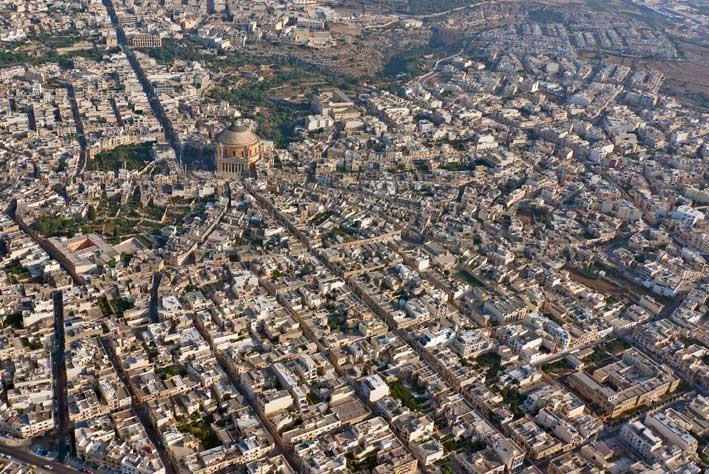At least five electoral districts are expected to be altered due to constitutional requirements which stipulate that each district, barring Gozo, must be +/- 5 per cent of the population of Malta divided by 12 districts.
But the changes could affect other districts since ultimately the ones in Malta all need to fall within the parameters of the law, and changes to the five districts involved – the first, second, fourth, the 11th and the 12th – will probably lead to adjustments involving the other seven.
The next election is scheduled for 2018, and the Electoral Commission is currently working on the changes that need to be implemented to satisfy the necessary criteria.
The electoral districts are redrawn every five years, in order to reflect population changes and to keep voting practices in line with constitutional requirements.

The last time the districts were changed was in 2012, which means that the new district layout needs to be concluded by next year. The next electoral register will be issued in October, but it is not likely that the modifications will be concluded by that time. The next chance would be in April 2017.
An exercise carried out by The Malta Independent shows that the first district (-7.93 per cent), second district (-5.12 per cent) and fourth district (-5.73 per cent) have all experienced decreases in population to an extent that their current numbers would make them unconstitutional.
The first district as it is now includes Valletta, Floriana, Hamrun, part of Marsa, Pieta (including Gwardamangia) and part of Santa Venera.

The second district is made up of Vittoriosa, Cospicua, Senglea, Zabbar, Kalkara and Xghajra, while the fourth district includes part of Fgura, Gudja, Ghaxaq, part of Marsa, Paola, Santa Lucija and Tarxien.
On the other hand, the population in the 11th district (+9.39 per cent) and 12th district (+7.72 per cent) has increased significantly since 2013 – the last time the districts were redrawn.
The 11th district includes Attard, Balzan and Mosta, while the 12th district includes Mellieha (inclusive of Manikata), part of Naxxar (all parts, inclusive of Bahar ic-Caghaq but excluding Simblija) and St Paul’s Bay (including Burmarrad).
These demographic changes in five districts will inevitably need to changes to other districts too, and this is giving the Electoral Commission a huge headache to come up with a solution.
With both the Labour Party and Nationalist Party, represented on the commission, working to protect their interests, finding a solution in the prevailing scenario is not an easy matter.
Taking out a locality, or part of it, out of one district, and placing it into another creates a domino effect that hits other districts. If district A is 10 per cent over the threshold, and five per cent is passed on to district B, this could lead to the latter going over the threshold, requiring parts of localities from district B to be regrouped in district C.
A requirement for localities to be geographically adjacent to each other in order to be grouped up into a district further complicates matters.

The responsibility for apportioning localities into the relevant districts falls under the Electoral Commission. It is believed that the commission has already had a series of meetings over the new electoral districts, with more set to take place in September.
Once the electoral commission completes its work, it then sends its proposals for the newly formed districts to the Prime Minister for approval. Should the Prime Minister reject the newly formed electoral districts, he may table the issue in Parliament for a discussion to take place. Ultimately however, the electoral commission has a final say on the electoral districts, meaning that it can ignore the Prime Minister, and Parliament’s objections.

Changes to the electoral districts are expected to have a great impact on future candidates who are planning to contest the next election. There have been cases in the past when changes to the composition of the districts favoured certain candidates while, at the same time, hindered the prospects of others.
Candidates popular in district A might not have the same chances of being elected if district A has a locality removed or added to it. It is also possible that candidates who have been doing house visits in some localities find out – when the new districts are drawn up – that they have been visiting people in the wrong areas.